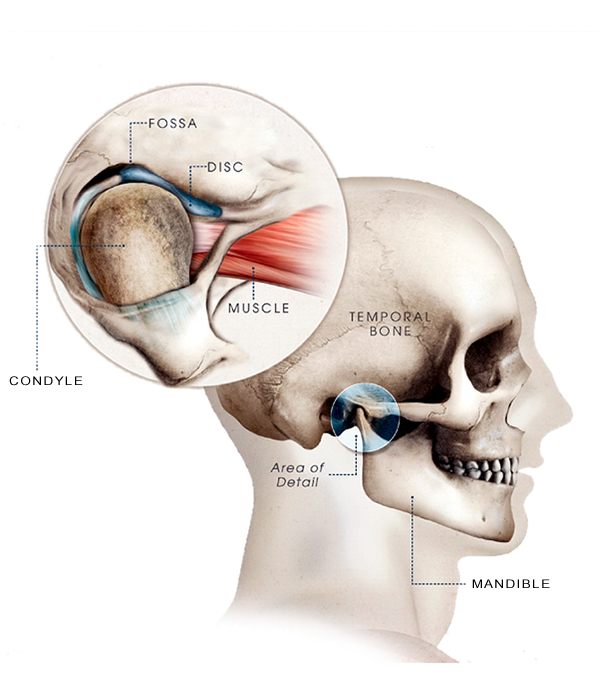What Is Temporal Mandibular Joint Dysfunction (TMJ)?
Temporal Mandibular Joint Dysfunction (TMJ)
Temporal Mandibular Joint Dysfunction (TMJ), also known as TMD Syndrome, is a complex musculoskeletal condition involving the teeth and mandible in conjunction with the surrounding nerves, ligaments, connective tissue, and the 68 pairs of muscles that control the joint. TMJ Dysfunction symptoms can vary from case to case but those with the condition will often experience jaw pain, headaches, problems chewing, earaches, clicking and grinding, or difficulty opening/closing the mouth. According to the National Institute of Dental and Craniofacial Research, the disorder affects approximately 35 million people in the United States, with women experiencing it four times more often than men.
The Temporol Mandibular Joint (TMJ) combines a hinge action with sliding motions. The parts of the bones that interact in the joint are covered with cartilage and are separated by a small shock-absorbing disk, which normally keeps the movement smooth.
Symptoms of TMJ Dysfunction
- Pain Or Tenderness Of Your Jaw
- Aching Pain In And Around Your Ear
- Difficulty Chewing Or Discomfort While Chewing
- Aching Facial Pain
- Locking Of The Joint, Making It Difficult To Open Or Close Your Mouth
Causes of TMJ Dysfunction
When the joint between the temporal (temple) and mandibular (jaw) bones is misaligned it displaces the articular disc that allows for the smooth gliding motion of the joint. The clicking noise often associated with TMJ Dysfunction will occur when the condyle (head) of the mandible passes over the ridge of the disk. While severe injury to the jaw is the most common cause, this type of misalignment can be caused by a variety of physical and emotional stresses. For example, anything from a hit to the side of the face during a sporting activity to chewing gum excessively or having extensive dental work done may cause TMJ Dysfunction. Causes may include:
- The Disk Erodes Or Moves Out Of Its Proper Alignment
- The Joint’s Cartilage Is Damaged By Arthritis
- The Joint Is Damaged By A Blow Or Other Impact
How Chiropractic Care Can Help
While the specific methods of treatment used by a chiropractor to treat a TMJ Dysfunction will depend on the patient, treatment usually involves gentle hands-on manipulation of the mandible and articular disc back to their normal position. This often provides short-term relief, but as chiropractors we’re interested in correcting not just the symptoms but also the cause of the problem. Because misalignment of the vertebra in the neck can cause an imbalance in the muscles controlling the action of the TMJ joint, treatment plans will often include adjustments to the cervical spine as well if indicated. Additionally, a chiropractor may recommend stress reduction and relaxation techniques, TMJ-specific exercises or modification of chewing habits to help prevent re-injury of the TMJ in the future.
Of course, in some cases, TMJ disorders may not respond to a conservative chiropractic approach and may require more aggressive dental or surgical treatment. However, this should be a last resort to be considered only if chiropractic care fails to improve the condition.



